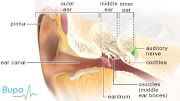
Injury or bodily injury is damage or harm caused to the structure or function of the body caused by an outside agent or force, which may be physical or chemical. Personal Injury also refers to damage caused to the reputation of another rather than physical harm to the body. A severe and life-threatening injury is referred to as a physical trauma.
Types of injury
Minor abrasion injury.
* Bruise is a hemorrhage under the skin caused by contusion.
* Wound: cuts and grazes are injuries to or through the skin, that cause bleeding (i.e., a laceration).
* Burns are injuries caused by excess heat, chemical exposure, or sometimes cold (frostbite).
* Fractures are injuries to bones.
* Joint dislocation is a displacement of a bone from its normal joint, such as a dislocated shoulder or finger.
* Concussion is mild traumatic brain injury caused by a blow, without any penetration into the skull or brain.
* Sprain is an injury which occurs to ligaments caused by a sudden over stretching; a strain injures muscles.
* Shock is a serious medical condition where the tissues cannot obtain sufficient oxygen and nutrients.
* Amputation is the removal of a body extremity by trauma or surgery.
* Serious bodily injury is any injury or injuries to the body that substantially risks death of the victim.
Types of injury
Minor abrasion injury.
* Bruise is a hemorrhage under the skin caused by contusion.
* Wound: cuts and grazes are injuries to or through the skin, that cause bleeding (i.e., a laceration).
* Burns are injuries caused by excess heat, chemical exposure, or sometimes cold (frostbite).
* Fractures are injuries to bones.
* Joint dislocation is a displacement of a bone from its normal joint, such as a dislocated shoulder or finger.
* Concussion is mild traumatic brain injury caused by a blow, without any penetration into the skull or brain.
* Sprain is an injury which occurs to ligaments caused by a sudden over stretching; a strain injures muscles.
* Shock is a serious medical condition where the tissues cannot obtain sufficient oxygen and nutrients.
* Amputation is the removal of a body extremity by trauma or surgery.
* Serious bodily injury is any injury or injuries to the body that substantially risks death of the victim.




